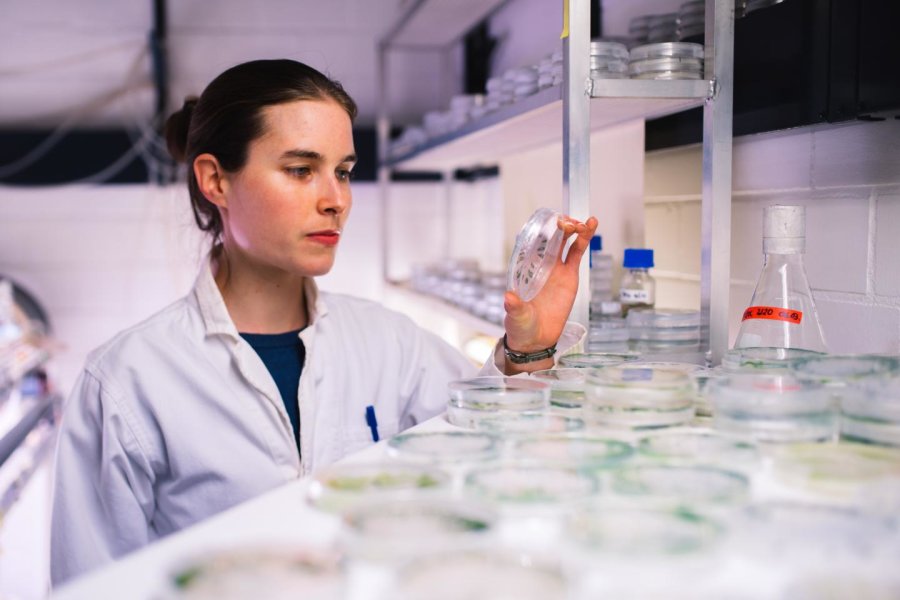A team of researchers from Ruhr-Universität Bochum have found out how green algae produce an enzyme that’s used in creating renewable hydrogen. This discovery can be used to understand how hydrogen can be produced through biotechnological means and eventually used to supplement or even replace fossil fuels as an energy source.
Hydrogenase production in algal cells
The researchers, which were led by Prof Dr. Thomas Happe, assistant professor Dr. Anja Hemschemeier, and Dr. Anne Sawyer, worked with Chlamydomonas reinhardtii, which are a type of single-celled algae. These organisms produce several enzymes, one of which is a type of hydrogenase called HYDA1.
This enzyme takes the hydrogen ions produced during photosynthesis and turns the ions into hydrogen gas through its cofactor (the area where hydrogen production takes place). Like with many other enzymes, the HYDA1’s cofactor is made of four sulfur atoms and four iron atoms; what makes it unique is that it has two additional iron atoms that help facilitate hydrogen production.
Chlamydomonas reinhardtii assemble their enzymes in certain regions of the cell (such as the cytoplasm and its chloroplasts), and each has a specific protein machinery that allows it to facilitate the assembly processes the right way. Dr. Happe and his fellow researchers wanted to know which of these regions can produce HYDA1 and its complex cofactor. To find out, they introduced hydrogenase precursors to the different regions of Chlamydomonas reinhardtii.
The researchers discovered that only the chloroplast of the algal cell could assemble a functioning HYDA1 hydrogenase. This means that the protein machinery that could produce this enzyme can be found only in the chloroplast and not in the cytoplasm and other regions.
Dr. Happe and his colleagues performed a subsequent test in which they took green algal genome and implanted it with bacterial hydrogenase blueprint. Chlamydomonas reinhardtii was able to utilize the blueprint to create an enzyme that effectively produce hydrogen.
Why is this important?
The results of this study prove that the production of hydrogenase in algal cells requires a certain type of protein machinery. Scientists can then conduct thorough studies of this machinery to fully understand how it works and ultimately replicate its functionality using biotechnology. This, in turn, can result to processes that will increase the efficiency of green algae in producing hydrogen.
This is definitely good news not just to those who are interested in renewable energy but for every human on earth. Hydrogen is one of the best alternatives to coal, petroleum, and other fossil fuels since it’s powerful enough to support the world’s energy needs but does not produce a lot of pollution. In fact, NASA already uses liquid hydrogen to power its space shuttles, and its hydrogen fuel cells produce clean water as a byproduct, which is then consumed by the crew on board.
The only problem is that hydrogen does not naturally occur as a gas; it’s almost always mixed with other elements, such as with oxygen to produce water. So, experts have to find ways to produce large amounts of pure hydrogen, and one of the strategies they’re looking at is to use green algae. It’s still not possible for green algae to produce hydrogen at large-scale levels, but the discovery of Happe et al bring us a step closer to a world that runs on clean, renewable energy using hydrogen production.
